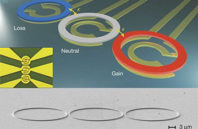A state of exceptional sensitivity, formed when a third nanoparticle is added to an optical microcavity already containing two light scatterers, is being studied by researchers as the potential basis for a system that could detect objects at the nanoscale, from minute vibrations in photonics systems to the presence of viruses in biological materials. Extending this concept to higher-order exceptional points could lead to detectors of even greater sensitivity, and is the focus of a research team at the University of Central Florida’s College of Optics & Photonics (CREOL).
Enhancing Sensitivity At Higher-Order Exceptional Points


 (585) 768-2513
(585) 768-2513
